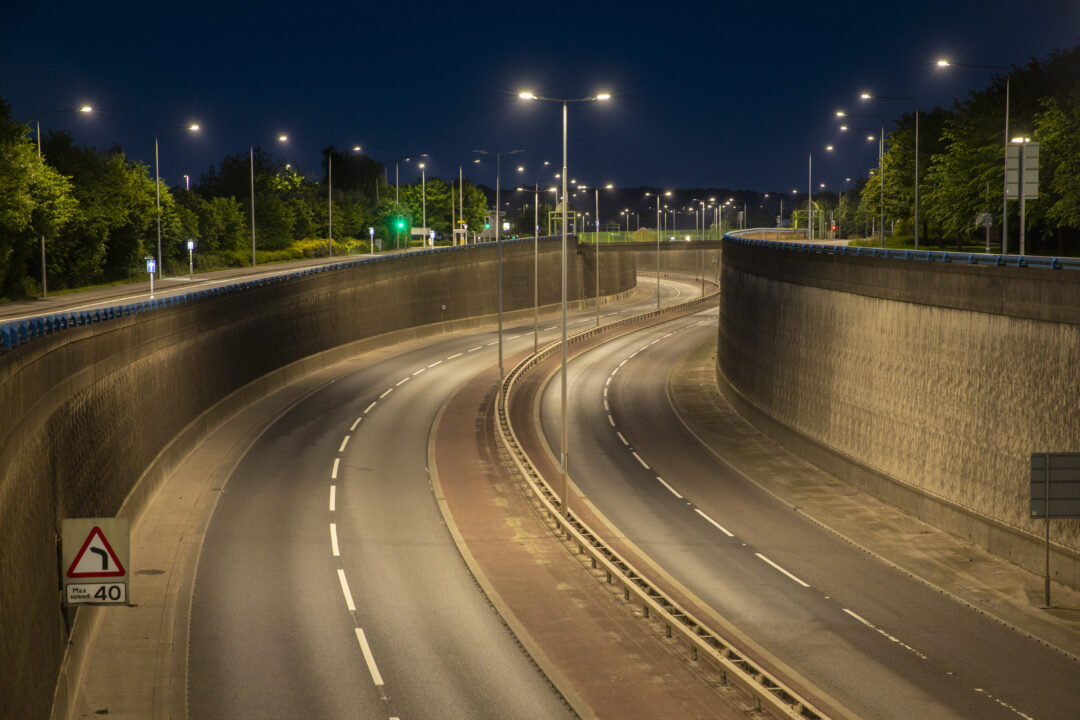Welcome to Street Lighting 101, where we shed light on the fundamentals of street lighting. Whether you're a city planner, an urban designer, or simply a curious individual, understanding the basics of street lighting is essential for creating safe, vibrant, urban environments.
WHY ARE STREETLIGHTS SO TALL?
One of the most noticeable features of streetlights is their height, but why do they need to be so tall? Streetlights are typically tall to ensure that their light is spread evenly across the road and surrounding areas.
Taller lights simply help maximize illumination coverage, whilst reducing dark spots and enhancing visibility for pedestrians, cyclists, and motorists alike.
How far apart do streetlights need to be?
The spacing between them depends on various factors, including the type of road, traffic volume, and lighting standards. In general, streetlights are placed at intervals ranging from 30 to 45 meters on urban roads and up to 120 meters on highways. However, spacing may vary based on local regulations and lighting requirements.
HOW MUCH POWER DO STREETLIGHTS USE?
Streetlights, like any other, consume electricity to produce light. Nevertheless, their power usage depends on a multitude of factors such as lamp type, wattage, and operational hours. Traditional high-pressure sodium (HPS) lamps are commonly used in street lighting and typically range from 35 to 400 watts.
However, with the adoption and fast-moving evolution of LED technology, newer streetlights, like those provided by CU Phosco Lighting, are far more energy-efficient, consuming significantly less power whilst delivering better illumination levels.
WHAT VOLTAGE ARE STREETLIGHTS IN THE UK?
In the UK, streetlights typically operate at voltages ranging from 220 to 240 volts. However, the specific voltage may vary depending on the type of lighting technology and the local electrical infrastructure.
HOW LONG DO STREETLIGHTS LAST?
The lifespan of streetlights varies depending on elements such as lamp type, maintenance practices, and environmental conditions. Traditional HPS lamps typically last around 24,000 to 36,000 hours, while LED streetlights can last upwards of 100,000 hours when being used for 12 hours a day.
Regular maintenance, including bulb replacements and fixture inspections, can help prolong the life of streetlights and ensure optimal performance.
WHERE DO STREETLIGHTS GET THEIR POWER?
Streetlights are powered by electricity sourced from the local power grid. They are typically connected to underground cables or overhead power lines that deliver electricity to each fixture.
In some cases, renewable energy sources such as solar panels may also be used to power streetlights, offering a sustainable and environmentally friendly alternative.
WHAT ARE STREETLIGHTS MADE OF?
In most cases, streetlights are constructed from durable materials such as aluminium, steel, or fiberglass. These materials provide strength, corrosion resistance, and weatherproofing to withstand outdoor conditions.
The components of a streetlight may include the mast, luminaire (housing the light source), electrical wiring, and various mounting hardware.
WHEN WERE STREETLIGHTS INVENTED?
Streetlights in the UK have a long history, with several significant developments over the centuries.
In 1684, the city of London introduced oil lamps, making it one of the first cities in the world to have organised street lighting. In 1807, gas street lighting was introduced, again in London, by Frederick Albert Winsor, and by the 1820's, gas street lighting was becoming common in major UK cities.
In 1879, the first electric street lights were installed in Newcastle. This marked the beginning of a transition from gas to electric street lighting, which gradually spread to other cities over the following decades.
IN CONCLUSION
Street lighting plays a crucial role in shaping the safety, functionality, and aesthetics of our urban environments.
By understanding the basics of street lighting, we can design and implement lighting solutions that enhance visibility, promote sustainability, and create inviting public spaces for communities to thrive.
We hope this Street Lighting 101 guide has illuminated your understanding of this essential aspect of urban infrastructure. If you have any further questions or would like to explore our range of street lighting solutions, don't hesitate to contact us at CU Phosco Lighting.

